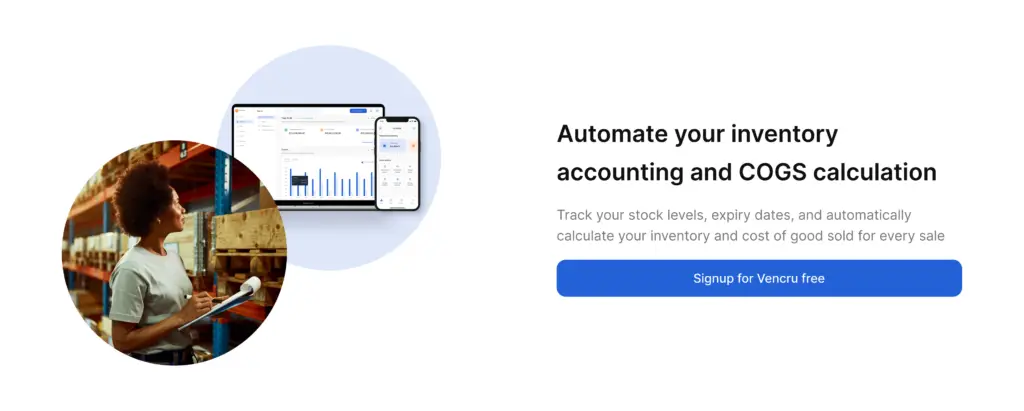In retail and wholesale, inventory management can be a make-or-break factor. Imagine having a retail store with thousands of products lining your shelves or being a wholesaler responsible for distributing goods to numerous retailers. How do you decide which products deserve your prime attention and which should take a back seat? This is where the ABC Analysis Report comes into play.
What is the ABC Analysis Report?
ABC Analysis is a classification technique that helps businesses categorize their inventory or products into three main groups, A, B, and C, based on their importance and value. The key factors in this classification are:
- A (High Priority): This group comprises a small percentage of items but contributes to a significant portion of your revenue and profit. These are your high-value, fast-moving products.
- B (Medium Priority): This group represents moderate-value items that don’t contribute as much as A items but still hold a substantial part of your inventory and sales.
- C (Low Priority): These low-value items constitute the most significant portion of your inventory but contribute the least to your revenue and profits. They are typically slow-moving products.
Related post: Inventory templates for retailers and wholesalers
Why is ABC Analysis Important for Retailers and Wholesalers?
- Profit Maximization: Businesses can significantly increase their profitability by identifying and giving attention to high-value items. Imagine you run a retail store with a wide range of products. Your ABC Analysis reveals that 20% of your products (A-items) contribute to 80% of your total revenue. By identifying these high-profit items, you can concentrate your marketing efforts. You can also offer promotions and ensure these products are always in stock. This can lead to a substantial increase in your overall profitability.
- Inventory Optimization: ABC Analysis helps retailers and wholesalers optimize their inventory by focusing on high-priority items. As a wholesaler, you deal with hundreds of SKUs. Your ABC Analysis shows that while some products fly off the shelves (A-items), others rarely move (C-items). With this insight, you can decide how much each product to order. Thus, reducing the risk of overstocking slow-moving items and freeing up capital.
- Resource Allocation: Instead of thinning your budget across all products, your ABC Analysis reveals that a few products (A-items) drive most of your sales. Now, you can allocate a more significant portion of your budget to promote these high-value items, ensuring a better return on investment.
- Pricing Strategies: For a wholesaler, understanding the significance of products in different categories can guide pricing strategies. A-products with high demand and value may allow for competitive pricing, while C-products might warrant higher margins to compensate for their slower turnover.
- Reduction in Carrying Costs: Slow-moving items (C-products) often contribute to higher carrying costs due to prolonged storage and potential obsolescence. You can implement strategies to reduce carrying costs by identifying these products, such as clearance sales or discontinuation.

What’s Included in an ABC Analysis Report?
An ABC Analysis report typically includes the following components:
- Product Details: A list of all products or inventory items, including their names, SKUs, descriptions, and unit prices.
- Sales Data: Information about the sales of each product, including quantities sold, revenue generated, and profit margins.
- Inventory Levels: Current stock levels of each product, including the number of units on hand and their total value.
- Classification: The categorization of products into A, B, and C groups based on predefined criteria. This often involves a combination of sales value and volume.
- Recommendations: Insights and recommendations for each category. For example, strategies for A items to maximize revenue, inventory reduction methods for C items, and balanced management for B items.
Calculation: How do you perform an ABC analysis?
This involves categorizing your inventory or products into three groups: A, B, and C. The categories are based on their importance or value. The criteria for categorization typically revolve around metrics like revenue generated, sales frequency, or profit margins. Here’s a step-by-step guide with examples:
Step 1: Gather Data
First, compile a list of all your inventory items or products. Include data such as item names, unit prices, total sales, and profit margins. This data will serve as the basis for your analysis.
Step 2: Calculate Total Revenue
Sum up the total revenue generated by each item over a specific period. For retailers, this could be annual sales figures, while wholesalers might analyze data over several months.
Step 3: Calculate Contribution Margin
Contribution margin represents the profit margin of each item. It’s calculated as [(Total Revenue – Total Cost) / Total Revenue]. The higher the contribution margin, the more profitable the item is.
Step 4: Sort by Revenue
Sort your inventory list by total revenue in descending order. This arrangement allows you to identify the items contributing most to your business’s revenue.
Step 5: Calculate Cumulative Percentage
Determine the cumulative percentage of total revenue as you move down the sorted list. This is typically done in a spreadsheet or table format.
Here’s a simplified example table:
| Item | Total Revenue ($) | Contribution Margin (%) | Cumulative Percentage (%) |
|---|---|---|---|
| Product A | 50,000 | 30% | 30% |
| Product B | 30,000 | 25% | 55% |
| Product C | 20,000 | 20% | 75% |
| Product D | 10,000 | 15% | 90% |
| Product E | 5,000 | 10% | 100% |

Step 6: Assign Categories
Based on your business’s specific criteria, assign categories to your items. Commonly, items are categorized as follows:
- A-items: These are the top-performing items that contribute significantly to your revenue. In the example, Products A and B fall into this category.
- B-items: These items have moderate importance. They contribute decently to revenue but are not as critical as A-items. Product C could be categorized as a B-item.
- C-items: These items have lower importance, often making up the bulk of your inventory but contributing less to revenue. Products D and E might be categorized as C-items.
Step 7: Analyze and Take Action
With your items categorized, you can now tailor your business strategies accordingly. A-items may warrant special attention regarding marketing, stocking levels, and pricing. B-items may benefit from optimization efforts, while C-items might require inventory management solutions to minimize carrying costs.
In conclusion, ABC Analysis is not just another inventory management technique. It’s a powerful tool that significantly improves your retail or wholesale business. Don’t let your inventory manage you—take control with Vencru today.





